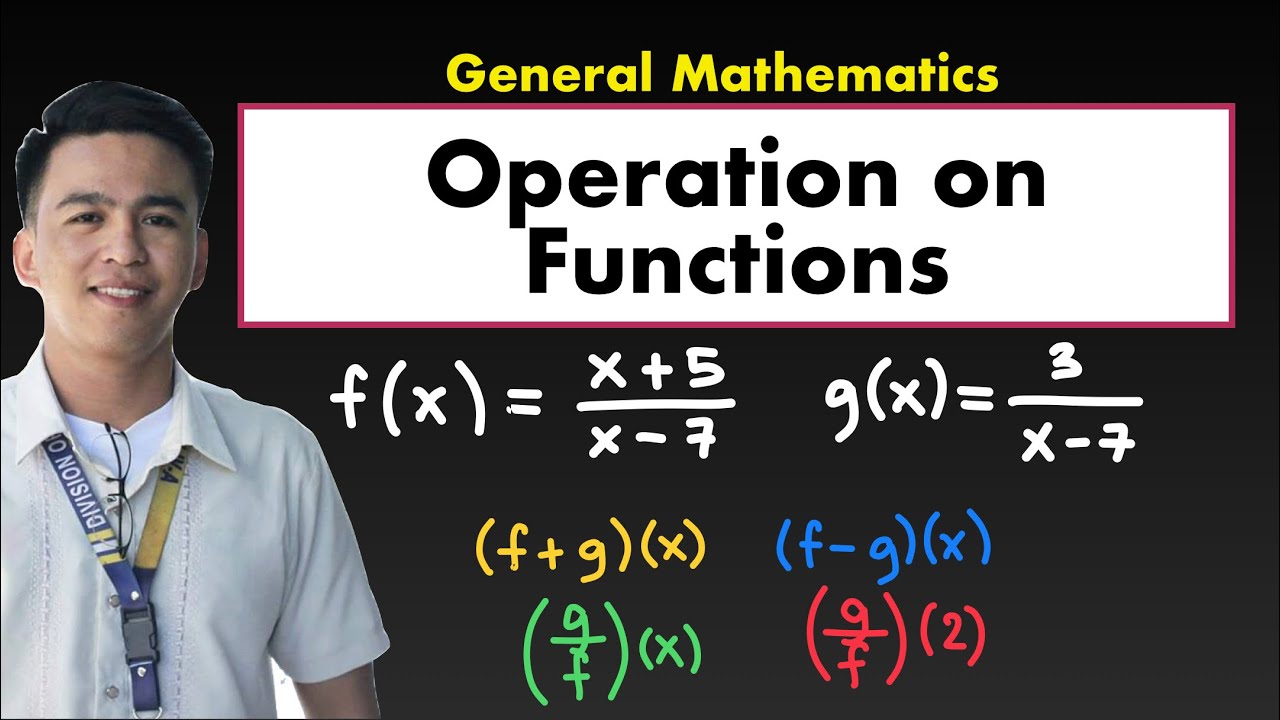Real Analysis 46 | Application for Taylor's Theorem
Summary
TLDRIn this video on Taylor's theorem, the presenter explains how to approximate complicated functions, specifically focusing on the logarithm function at the point 1.2. By calculating the first few derivatives of the logarithm, a third-order Taylor polynomial is derived to provide a precise approximation. The video also discusses the remainder term, which helps assess the accuracy of the approximation, ensuring the reliability of the computed digits. This insightful application demonstrates the theorem's practical value in real analysis, setting the stage for further exploration in upcoming videos.
Takeaways
- 😀 Taylor's theorem provides a method for approximating complicated functions using derivatives.
- 😀 The theorem requires a function to be n+1 times differentiable at a chosen expansion point x₀.
- 😀 The nth order Taylor polynomial (Tn) represents the approximation, while the remainder term (Rn) indicates the accuracy.
- 😀 For the logarithm function, x₀ = 1 is chosen because log(1) = 0, which simplifies calculations.
- 😀 The first few derivatives of the logarithm are crucial for constructing the Taylor polynomial.
- 😀 The third-order Taylor polynomial for log(1.2) is derived and simplified to h - (1/2)h² + (1/3)h³.
- 😀 Substituting h = 0.2 into the polynomial provides an estimated value for log(1.2).
- 😀 The remainder term helps verify the accuracy of the approximation by bounding the possible error.
- 😀 The calculation shows that the approximation gives reliable results for the first three digits of log(1.2).
- 😀 Higher-order Taylor polynomials can improve the precision of the approximation for more digits.
Q & A
What is the main topic of the video?
-The main topic is the application of Taylor's theorem to calculate complicated functions, specifically the logarithm function.
What does Taylor's theorem allow us to do?
-Taylor's theorem allows us to approximate a function using its derivatives at a specific point, giving us a polynomial approximation.
What is the significance of the expansion point x0 in Taylor's theorem?
-The expansion point x0 is crucial as it is where the function value is known and from which we derive the Taylor polynomial.
Why is the point 1 chosen as the expansion point for calculating log(1.2)?
-Point 1 is chosen because the logarithm function has a known value of zero there, making it a suitable point for approximation.
How do we derive the third order Taylor polynomial for the logarithm?
-We derive the polynomial by calculating the derivatives of the logarithm at the expansion point, then applying the Taylor series formula.
What are the derivatives calculated for the logarithm function?
-The derivatives calculated include: first derivative (1/x), second derivative (-1/x²), third derivative (2/x³), and fourth derivative (-6/x⁴).
What is the value of log(1.2) approximated using the third order Taylor polynomial?
-The approximation for log(1.2) using the third order Taylor polynomial is 0.1826.
What role does the remainder term Rn play in Taylor's theorem?
-The remainder term Rn indicates the error in the approximation, helping us assess how accurate our Taylor polynomial is.
How do we estimate the accuracy of the approximation for log(1.2)?
-We estimate accuracy by bounding the remainder term, showing that the actual value lies within a certain range based on our polynomial approximation.
What can be done if more precision is needed beyond the third order polynomial?
-If more precision is needed, we can use a higher order Taylor polynomial, which incorporates more derivatives for a better approximation.
Outlines

Dieser Bereich ist nur für Premium-Benutzer verfügbar. Bitte führen Sie ein Upgrade durch, um auf diesen Abschnitt zuzugreifen.
Upgrade durchführenMindmap

Dieser Bereich ist nur für Premium-Benutzer verfügbar. Bitte führen Sie ein Upgrade durch, um auf diesen Abschnitt zuzugreifen.
Upgrade durchführenKeywords

Dieser Bereich ist nur für Premium-Benutzer verfügbar. Bitte führen Sie ein Upgrade durch, um auf diesen Abschnitt zuzugreifen.
Upgrade durchführenHighlights

Dieser Bereich ist nur für Premium-Benutzer verfügbar. Bitte führen Sie ein Upgrade durch, um auf diesen Abschnitt zuzugreifen.
Upgrade durchführenTranscripts

Dieser Bereich ist nur für Premium-Benutzer verfügbar. Bitte führen Sie ein Upgrade durch, um auf diesen Abschnitt zuzugreifen.
Upgrade durchführenWeitere ähnliche Videos ansehen

Deret Taylor [Metode Numerik]

Taylor series | Chapter 11, Essence of calculus

Joining two functions so that their gradients match: Part 1 (Maths Methods PSMT IA1 prep)

Eps.13 KALKULUS 1: Kekontinuan Fungsi

Operation on Functions | Addition, Subtraction, Multiplication and Division of Functions

Laplace Transform and Piecewise or Discontinuous Functions
5.0 / 5 (0 votes)
